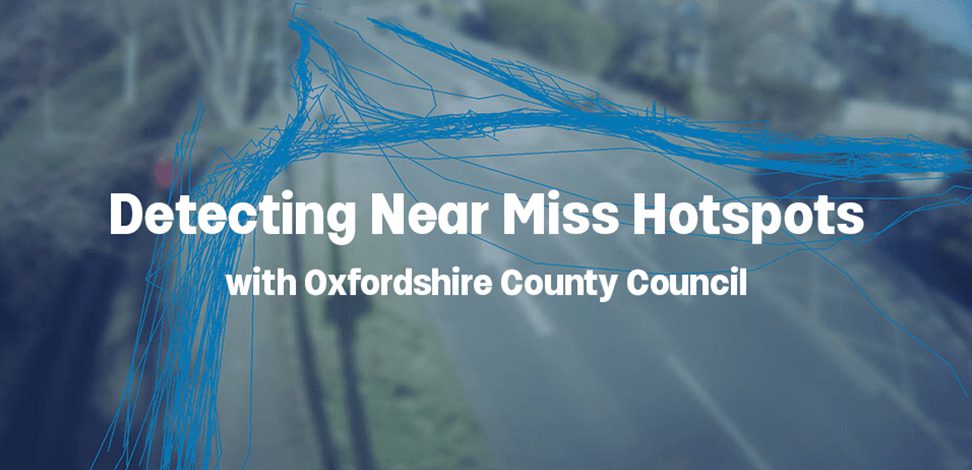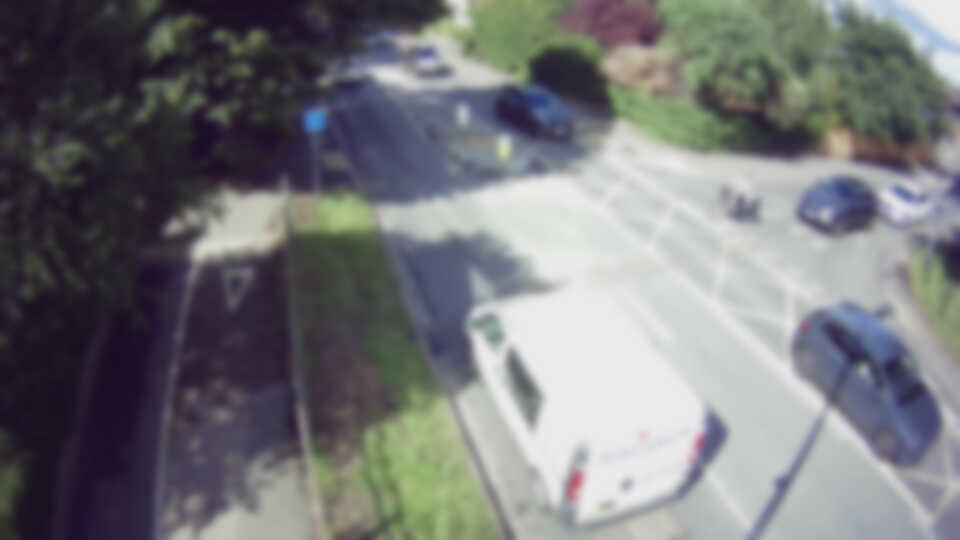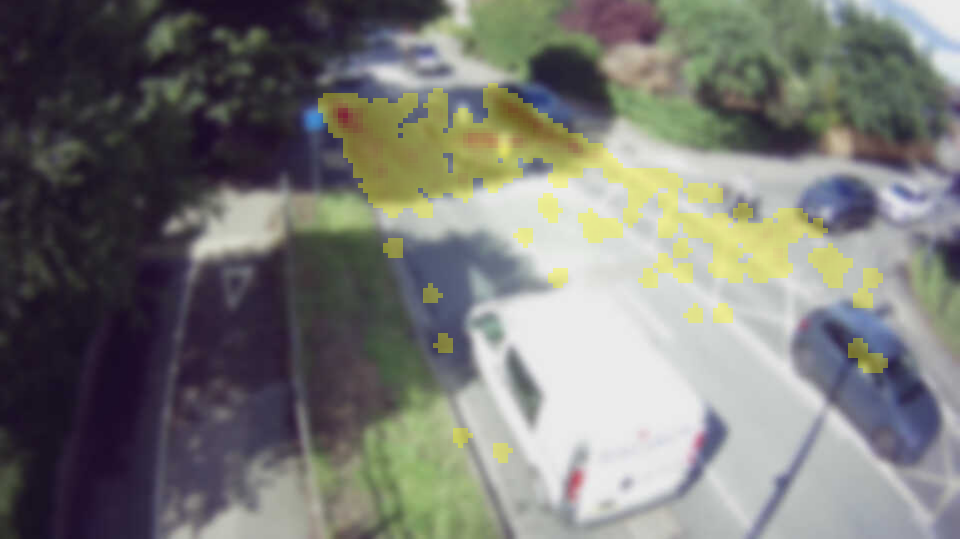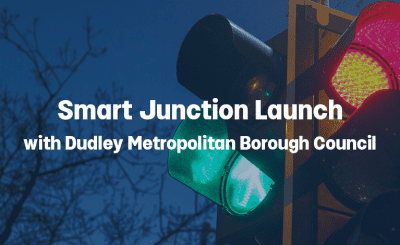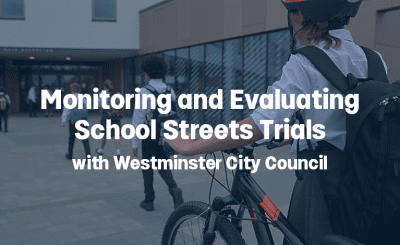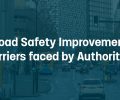Oxfordshire County Council is using VivaCity data to detect cyclist Near Miss hotspots
According to the World Health Organization, road traffic accidents are one of the world’s largest public-health problems. In the UK, every 16 minutes someone is killed or seriously injured on the road.
Road safety interventions are typically based on incomplete and infrequent information
Despite the adoption of Vision Zero strategies to eliminate traffic fatalities and severe injuries, progress is relatively slow. Historic incidents are the most commonly used road safety metric, but mean that interventions are reactive rather than preventative.
VivaCity has been working with Oxfordshire County Council to develop the use of the traffic monitoring sensors for the detection of near miss incidents on their roads to better understand road safety and active travel.
VivaCity’s Near Miss technology
What is a near miss and how is it measured?
A near miss can be defined as a dangerous interaction between at least two road users that could have led to a collision but didn’t.
Using AI-powered computer vision sensors to collect traffic data on different road user types, VivaCity has developed a way of automatically detecting near miss interactions. It builds on state of the art research to quantify near misses, analysing trajectories of road users in time and space and how they relate to each other.
The feature’s first version focuses on near misses between motorised vehicles and cyclists, who are one of the most vulnerable road users. Near miss experiences can discourage people from cycling at a time when governments seek to increase active travel levels.
VivaCity’s Near Miss data provides a way to understand where additional interventions may be required to create safer environments for vulnerable road users, and promote active travel as a result.
Oxfordshire County Council case study
A VivaCity sensor monitoring Oxford Road and Newman Road was configured to capture near misses between cyclists and drivers. Following road closures in the area, the junction recorded an increase in turning movement from the residential street onto the busy A-road. The Council also identified harsh braking in the area and had anecdotal evidence about dangerous situations from users of the junction. VivaCity’s Near Miss data was used to help quantify these assumptions and identify potentially dangerous areas.
Cyclist volumes at the site are relatively consistent throughout the year with lower numbers in winter and peaks during morning (08:00-09:00) and afternoon (17:00-18:00) rush hours. Between June and December 2022, an average of 863 cyclists were recorded on weekdays compared to 550 on weekends. Cyclists account for 4% of all road users.
Discover the benefits of VivaCity's Near Miss feature
DOWNLOAD THE BENEFITS GUIDE NOW
How often do near misses with cyclists occur?
Between 12th December 2022 and 12th February 2023, the sensor recorded a total of 1,132 near miss events between cyclists and motorised vehicles. The number of near misses was much lower during the Christmas holidays and on weekends, in line with cycling volumes. The majority of events involved cars (87%), followed by LGVs (11%).
Cyclist near miss events are recorded in absolute terms as well as proportion of cyclist counts - i.e. near miss rate. While the average number of near miss events was highest in the morning (08:00-09:00) and afternoon (16:00-17:00) during peak travel times, the near miss rate was highest around lunchtime (13:00-14:00).
How do near misses happen?
In addition to event counts, the VivaCity Near Miss product also offers blurred video clips of near miss events. This qualitative data brings to light contextual information and allows more in-depth assessments.
Following a review of the video samples, different types of events were identified as common near miss situations.
Type 1: Cyclists using the prescribed crossing in both directions. Near miss events occur with vehicles travelling along the road when either cyclists cross the road or have to wait on the island, often with other road users.
Type 2: Cyclists going northbound on Oxford Road coming from Newman Road. Once on Oxford Road, near misses occur when fast moving vehicles approach from behind until cyclists join the cycle lane.
Type 3: Cyclists joining the cycle track going southbound coming from Newman Road. Rather than using the left-hand side cycle lane on Newman Road to cross Oxford Road via the dedicated island, some riders cross the road diagonally, increasing the likelihood of near misses.
Where do near misses occur in the road space?
Combining different metrics such as speed, proximity and angle, each near miss event between cyclists and vehicles has a single moment that is considered the most dangerous. These moments can be displayed as a heatmap to explore where near misses are more likely to occur in the road space.
Cyclist near miss events occur more often around the crossing island. The most problematic points seem to be along Oxford Road northbound as the off carriageway cycle track ends and northbound cyclists have to re-join the carriageway at the dropped kerb starting at this crossing point. Flexible bollards on the road seem to prevent cyclists coming from Newman Road to join the lane straight away, leading to near miss events with vehicles approaching from behind. Extending the length of the drop kerb between the crossing point and the cycle path drop kerb to the north as well as to the south may assist cyclists and reduce the number of near miss events.
How do near misses compare with general cyclist movements?
Near miss events can be contrasted with track images that show the paths road users take across the road space. During peak hours with high levels of motorised traffic, cyclists make good use of the crossing island when joining Oxford Road northbound from Newman Road. While during off-peak hours, cyclists tend to ride across the junction suggesting the more natural cycling path. Crossing paths during peak hours show more cyclists using the island, suggesting that crossing the junction during busy periods could be difficult without it.
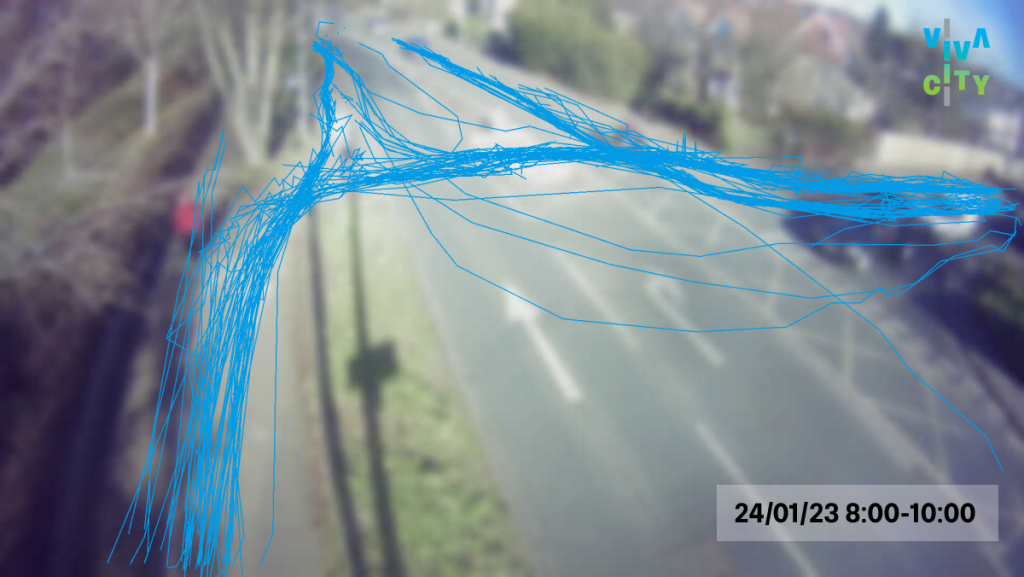
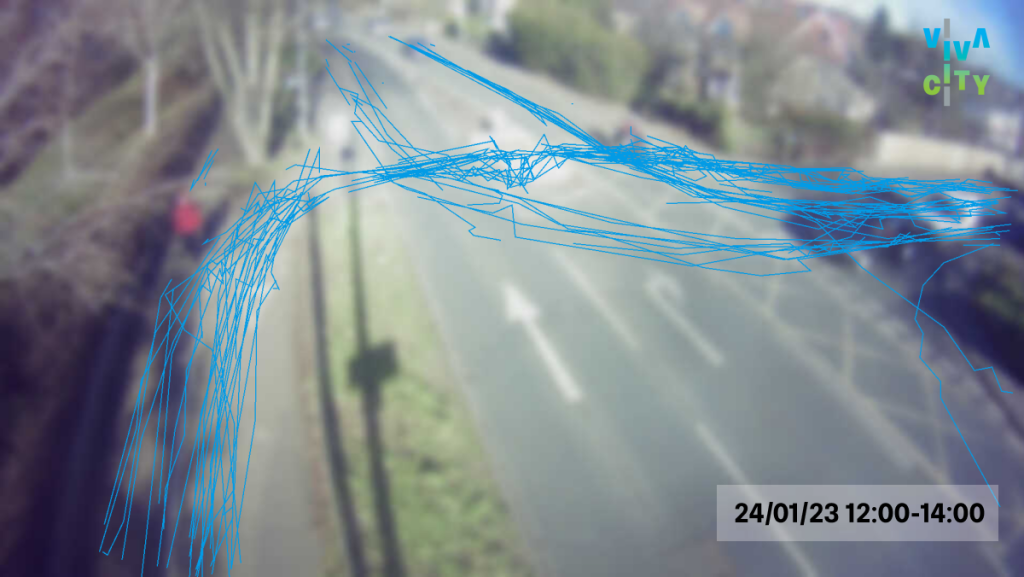
Outlook
VivaCity has just launched its first version of the Near Miss product. Using this data, Oxfordshire County Council has been able to better understand the scale of near misses and risk for cyclists. It also provides detailed information about hotspots and common near miss situations that can inform potential interventions such as speed limits or changes to the road layout. Using this type of data can contribute to the Council’s Vision Zero - the elimination of deaths and serious injuries from road traffic collisions in Oxfordshire.
Next iterations of the Near Miss technology will include more road user types, for example pedestrians, to help inform interventions such as School Streets, and bring heatmaps to the dashboard to allow all users to identify near miss hotspots.
This Near Miss product is the first of its kind and makes it possible to measure near misses at scale. While the use of metrics removes observer subjectivity, more research is needed to understand categories and severity of near misses and how they vary depending on context. VivaCity is committed to continue improving Near Miss data based on extensive research and real use cases of road safety engineers.
Near Miss supports your Road Safety and Active Travel goals
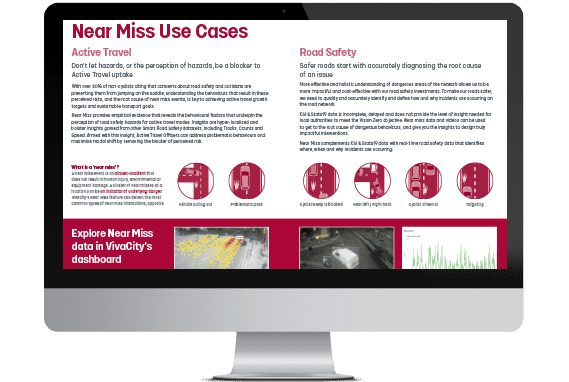
With Near Miss you can:
- Identify hazardous areas on the road network to guide strategic, cost-effective interventions
- Justify expenditures with post-intervention analysis that quantifies impact
- Understand behavioural factors and common scenarios that underpin road safety hazards
- ... and much more
Download the Near Miss brochure
Want to see how our Smart Road Safety solution works?
You might also be interested in:
Our Solutions | Our Products | Other News & Case Studies | About us

